Position - Why it is so important
We are no longer building saddle trees, but we have two videos about how Western saddles fit horses available on our westernsaddlefit.com website.
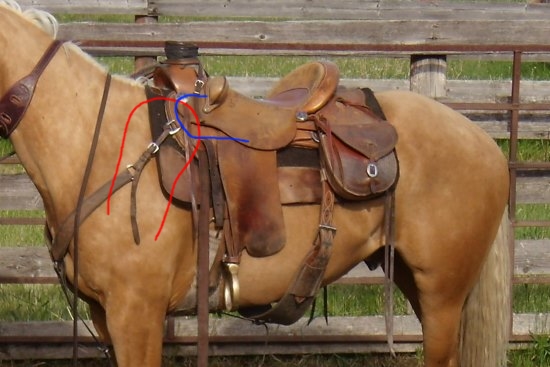
The last few posts have been discussing the position of the saddle relative to the shoulder blade. So why are we saying this? What’s the big deal if the saddle is behind the shoulder blade or on top of it? Does it matter? Yup it does – and here’s picture proof of why…
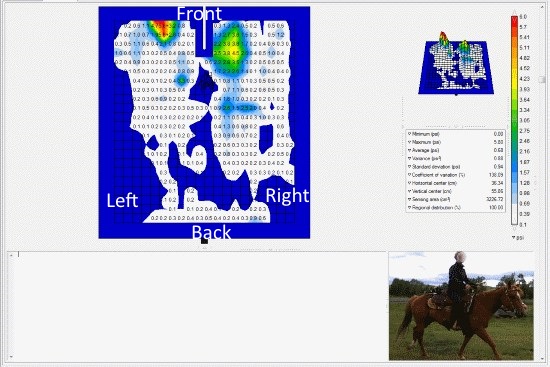
Almost a year ago we gave some riders the opportunity to have their saddles pressure tested with our system – English, Western and side saddles of both types. We had three come with normal western saddles. Here’s the protocol we used. We put the mat on the horse where we normally would place it to fit well under a saddle in the proper position behind the shoulder blades. Then we asked the rider to saddle up their horse – no comments given on how they saddled. They mounted up and we pressure tested while they rode.
First rider, we put the mat on the horse so the front edge was well forward of the back of the shoulder blade – more than enough room for proper saddle placement to be recorded well. The rider saddled with saddle right up on shoulder blades. Rod and I looked at each other. No comment. Second rider, same thing. Third rider, same thing. This is obviously a very common practice...
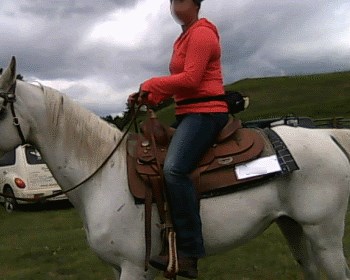
This horse was a sweetie, and the owner had really been trying hard to help her. I’ve read where horses will try to bite, etc. when being saddled, but had never seen it before. This mare did. If you even petted her over her shoulder blades, she shuddered her skin and flinched. Mounting and especially dismounting she consistently moved and ducked away from the rider. The owner told us all the things she had tried and was continuing to try medically to help her horse. She was going through everything she could think of, but she didn’t think of the saddle position. Here is where she put it…
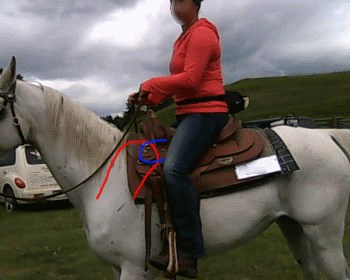
and where the shoulder blade is relative to the bar, as we discussed in our last post. (I apologize for the quality and size of the pictures on this post, but these are the pictures taken from our pressure system and they are what they are.)
Following is what the pressure scans showed us. The recording rate on the pressure system isn’t very high, and a lot goes on in between the pictures, but here are the results with our technology as it is. Because we put the mat where the saddle should go, there was a fair amount of bar ahead of the scanning areas over the shoulder. This meant a lot of the pressure over the shoulder blades was off the front edge of the pressure mat, and the center of the saddle is not in the middle of the mat but closer to the front.
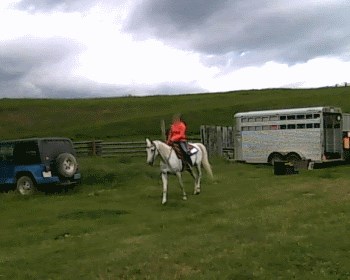 |
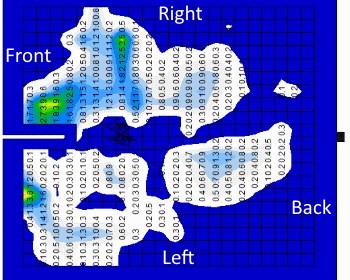 |
In this picture, the horse is touching down with the right front and just lifting off the left. You can see the hot spot right on the edge of the mat from the left front which still has weight on it. Notice that despite the right leg being in full extension, there is no pressure on the shoulder area, because it is not quite weight bearing yet. The pressure you see on the right is on the side of the wither. (You can see that I have flipped the scan sideways so it matches the direction of the horse.)
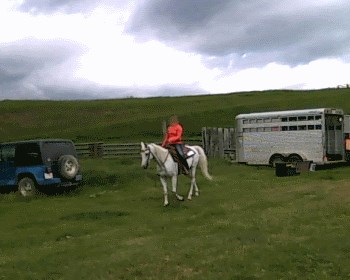 |
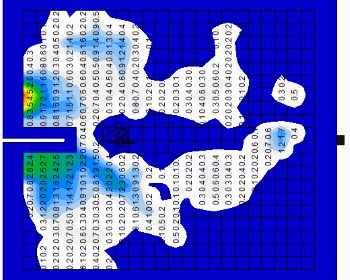 |
Weight on the right leg, and look at the pressure on the shoulder blade. Too bad the mat wasn't further forward to see what was happening there. Nothing on the left shoulder, where the leg is not weight bearing.
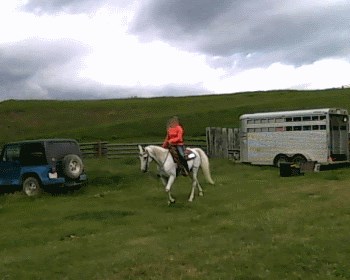 |
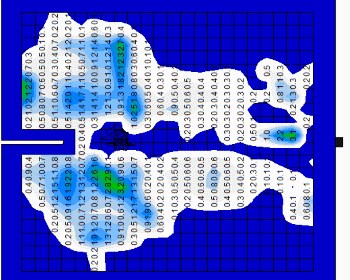 |
Just past mid-stance. Right leg straight up and down and left just starting its reach forward. You can see the edge of the pressure on the right front that goes off the front of the mat. We don’t know what was ahead of that.
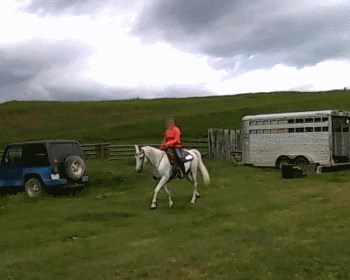 |
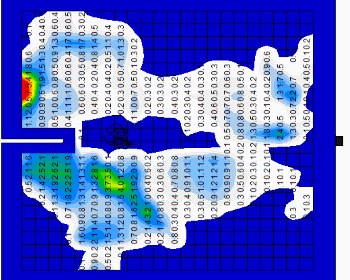 |
Reaching with the left, right carrying full weight. No, I didn’t invert the scan. There is no pressure on the left shoulder blade, despite the extension there, and there is lots on the right, which is carrying the weight.
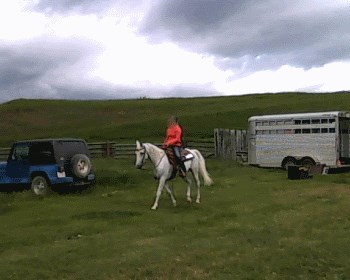 |
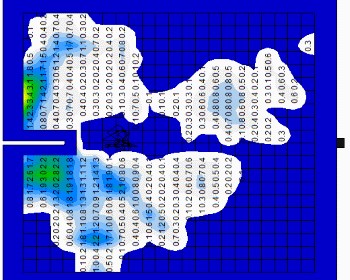 |
You can still see pressure on the right, going off the front of the mat, because that leg is still weight bearing. Slight pressure starting on the left as it has just touched down.
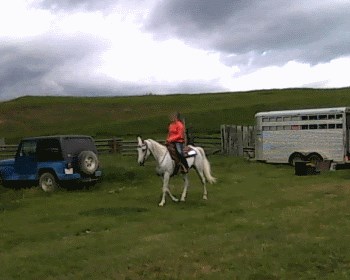 |
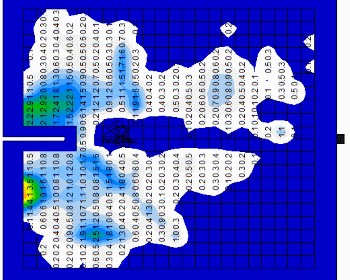 |
Now the right shoulder is pressure free, and the weight bearing left has the high pressure spots. (There are also interesting things going on with pressure alongside the withers and under the stirrup leathers and artifacts from folds in the mat, but for now we are just concentrating on the shoulders.)
So after we got these scans we showed them to the rider, who then understood why her horse was so sore. The horse was unsaddled and with a bare tree we showed her where the tree is meant to sit on the horse, with the front bar tip right behind the shoulder blades. The horse was resaddled properly, and we retested the pressures.
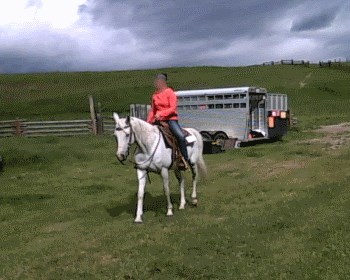 |
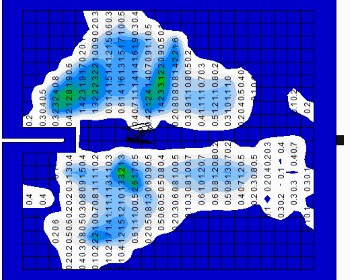 |
Here’s the same footfall pattern as above. Right front just touching down, left front not quite lifted off. The front of the saddle is now the second or third row back from the front of the pad.
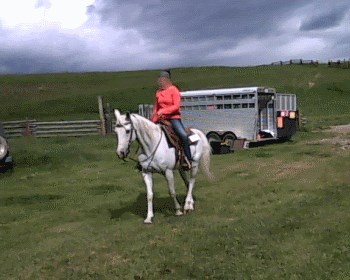 |
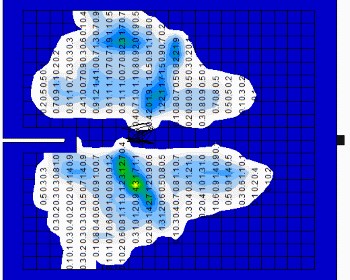 |
Right front weight bearing, left front lifting off.
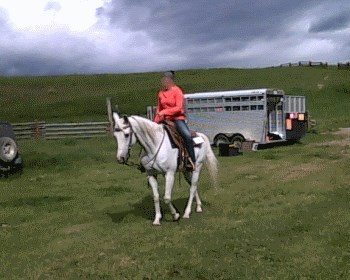 |
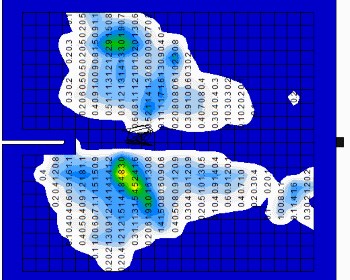 |
No hot spots at all on the shoulders as the right front carries full weight
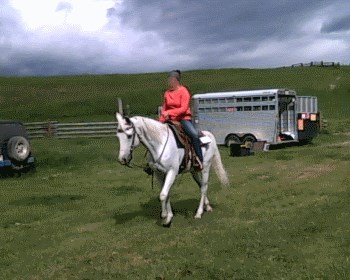 |
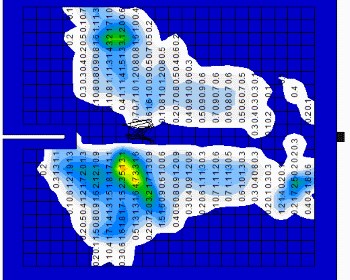 |
Moving along, still no hot spots on the shoulders at all. (The angled color on the left side would be an artefact from a fold in the pad. It does that…)
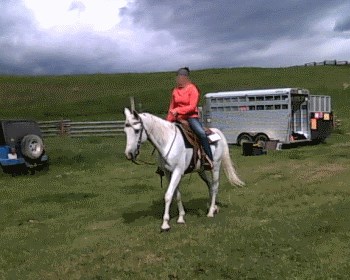 |
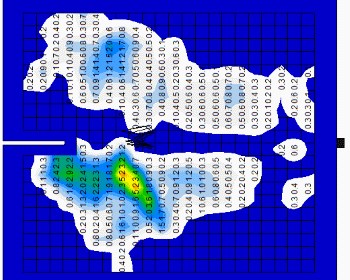 |
A big difference from the previous scans, isn’t there? This saddle actually fits the horse quite well…
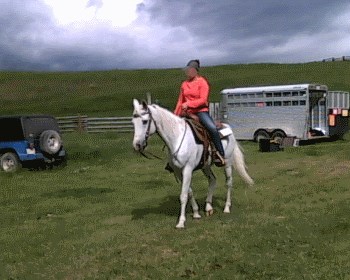 |
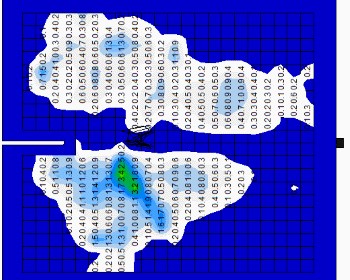 |
When it is properly positioned...
When the rider dismounted this time, the horse moved, but didn’t duck away as she normally did. The rider noticed the difference, and when she saw the scans, she understood why. Position really does make a difference…
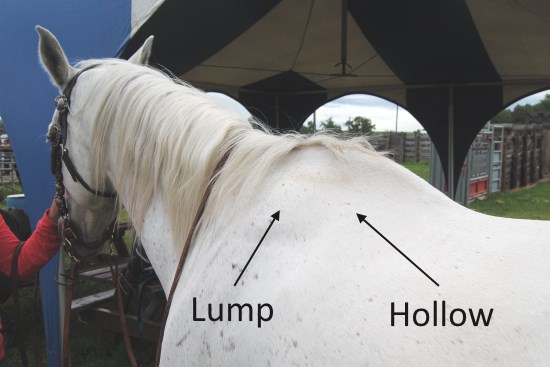
Here’s a picture of the horse’s back. You can see the “lump and hollow” as a result of the damage. This was a good owner trying her best. She just didn’t know what happens under the saddle when it is placed on the shoulder blades. Her horse was telling her there was a problem. She was going to great lengths to fix the problem, but she didn’t know the right fix. And it is an easy fix. Cheap too!!
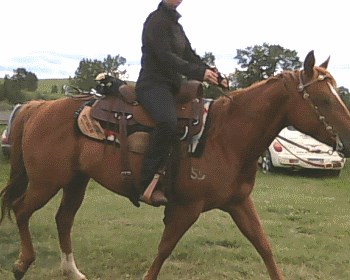 |
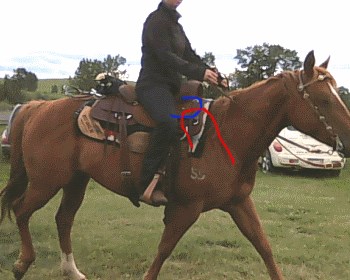 |
Another horse, same protocol in testing, same scenario. Here’s where she positioned her saddle.
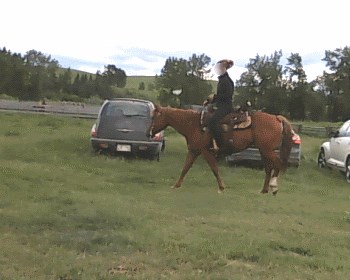 |
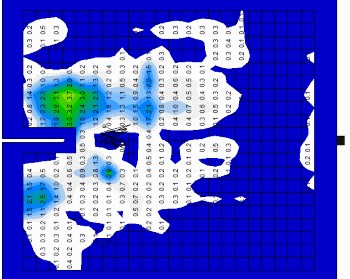 |
Starting again with weight just coming off the left fore and the right fore just touching down. (This saddle has other issues with it – really long bars on a short backed horse bridging from behind the stirrup groove back, and high pressure under the stirrup leathers. Arizona bars, maybe? I don't recall checking. However, we again are looking at the shoulders here, not the rest of the fit.)
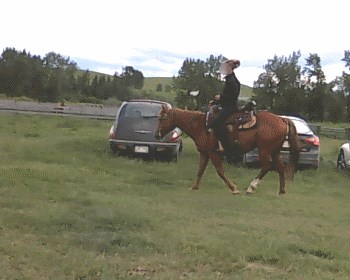 |
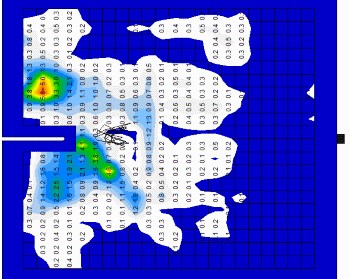 |
Once there is weight on the right leg, the high pressure area shows up. (As is that fold on the left side of the pad...)
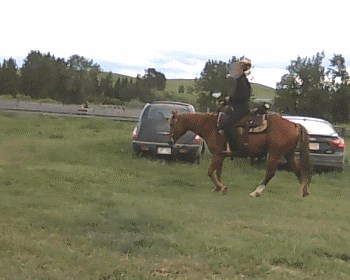 |
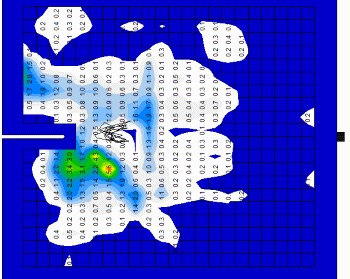 |
Mid-stance here and the high pressure area is off the front of the mat. No idea what it would have looked like if we had positioned the mat further forward – but we didn’t expect to need to…
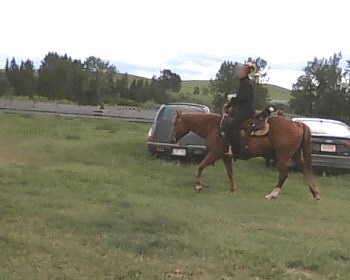 |
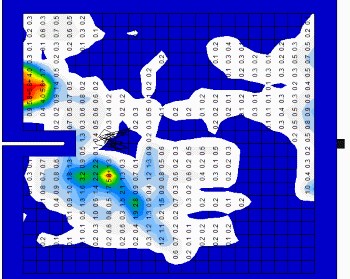 |
The hot spot is big enough now that you can see a lot of it. Left leg extending forward – no pressure, despite the shoulder blade rotating back. Interesting, eh? (It’s Canada Day, so I had to have a little patriotic “eh” in there…)
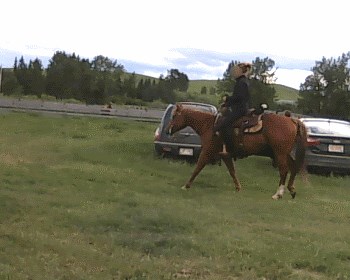 |
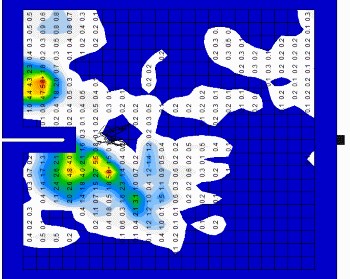 |
Right leg still weighted and still a hot spot there. Pressure on the left side of the withers as well, but not on the shoulder blade – yet… (How much of that hot spot is because of the fold in the pad is uncertain. The angled part is likely all due to it.)
Once again, we showed the rider the pressure pattern, where the saddle is supposed to sit, had her resaddle properly and tested again.
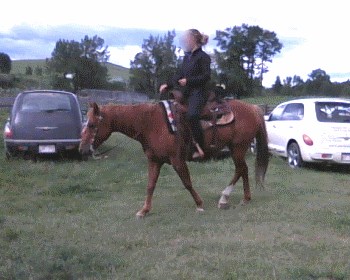 |
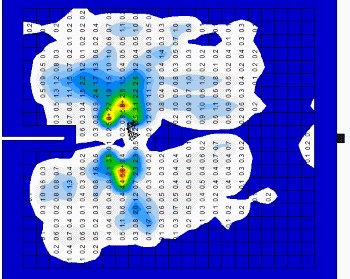 |
This set of scans was just a little bit different in timing than the previous one, but you still see the same patterns. Right fore just touching down as left fore is lifting off. High pressure under the stirrup leather area (issues there obviously) but the shoulders are free. You can see how much further back on the mat the saddle is sitting now.
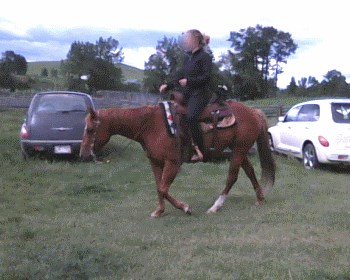 |
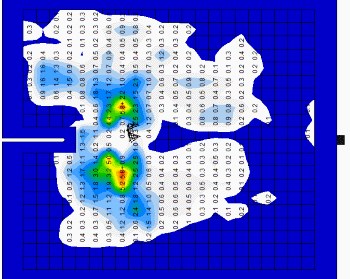 |
Full weight on right leg. You can see where the shoulder blade is contacting now, but it isn’t a high pressure area any more.
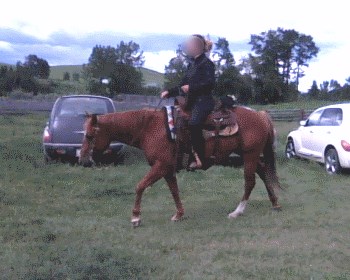 |
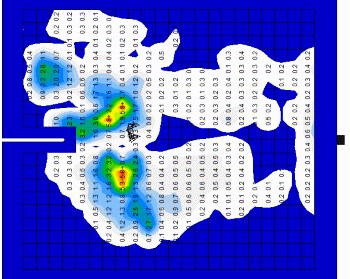 |
Reaching with the left front and a bit of pressure on the right, but nothing compared to when the saddle was up on the shoulder blades.
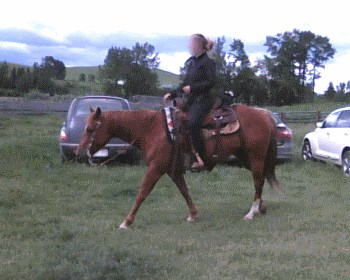 |
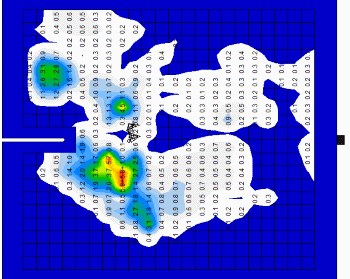 |
Full extension on the left – no pressure on the shoulder blade. Just before lift off on the right, when we usually see the highest pressure. (We’ll show you why in a later post.) Major difference for the horse just by placing the saddle behind, rather than on, the shoulder blades.
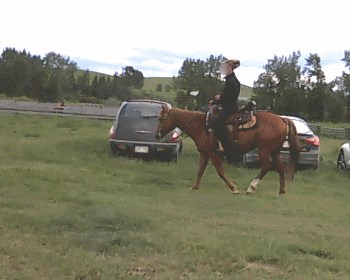 |
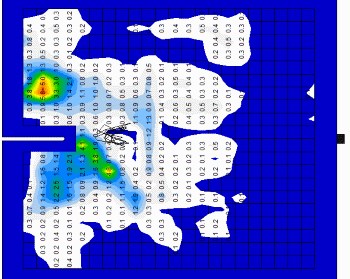 |
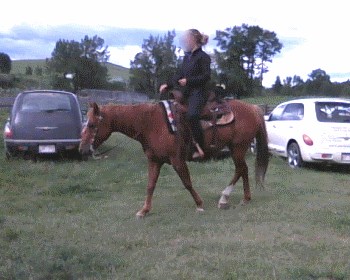 |
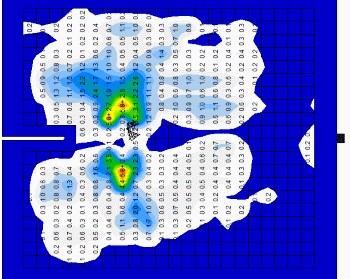 |
When we showed the rider the difference, she was really surprised. She and her boyfriend show this horse and ride her a lot. They just didn’t know they were saddling incorrectly. Later that afternoon the boyfriend sought us out to say that he had ridden that horse with the saddle in the proper position. “I’ve never felt her move like that” is what he wanted to tell us. Again, an experienced rider who just didn’t know better. (Note: they also planned to change saddles as they could see the other issues with this one.)
It just goes to demonstrate that a lot of people don’t know where to position their saddle, and the horses pay for that lack of knowledge. However, there are a few people who promote putting the saddle on the shoulder blades. They mustn’t have had the opportunity to see pressure scans like these or I doubt they would say that. (At least, I hope they wouldn’t!)
Is anyone surprised at the pressure patterns, wondering why the pressures are high at the “wrong part of the stride”? Like we keep saying, pressure occurs when the horse has weight on the leg, not when it is off the ground. Despite the fact that everything you read on the net says that you have to worry about pressure on the shoulder blade during the extension phase of the stride when the shoulder blade rotates back, there simply isn’t any pressure on it then. We’ll show you why in a future post, but if you want to know before then, just watch the shoulder blade when a horse walks. You’ll figure it out…
